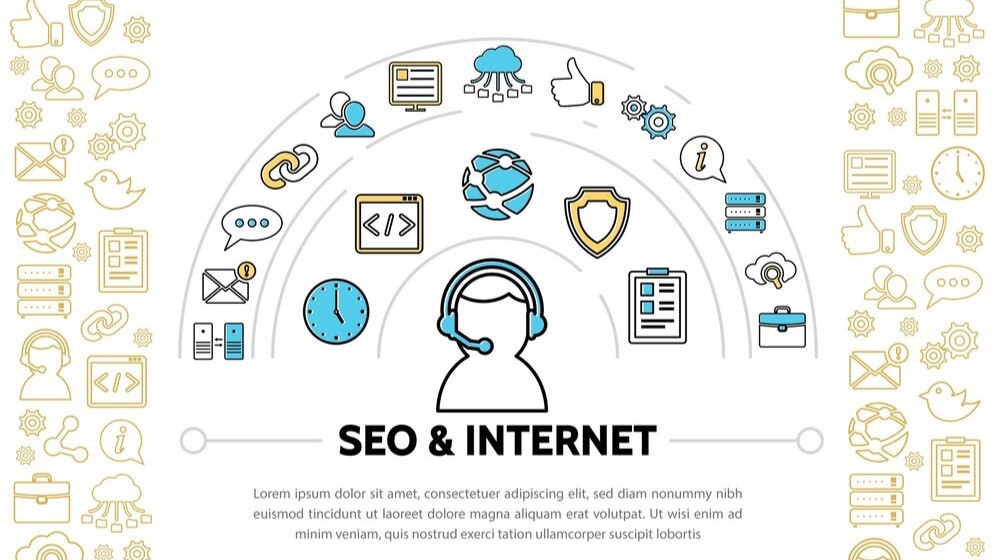Did you know? 75% of people never scroll past the first page of Google. If your site isn’t ranking, you’re missing huge opportunities but don’t worry, you’re about to fix that.
No matter if you’re using WordPress, Shopify, or a custom built site, mastering SEO (Search Engine Optimization) is the key to getting noticed. Let’s break it down into simple, proven steps that actually work.
Step 1: How Search Engines Work (Crawling & Indexing)
Search engines like Google, Bing, and Yahoo don’t magically “know” what’s on your website. They use bots (crawlers/spiders) to scan web pages and store them in a giant digital library called an index.
Here’s how it works
✅ Crawling – Bots visit your website, following links to discover new content.
✅ Indexing – Once crawled, your pages get added to Google’s index.
✅ Ranking – When someone searches, Google ranks the most relevant pages at the top.
Why This Matters: If your website is hard to crawl (slow, missing internal links, or blocked by robots.txt), Google may not index it properly meaning you won’t show up in search results!
Step 2: On-Page SEO (Optimizing for Search Engines & Users)
On-page SEO is how you optimize individual pages to rank higher. Here’s what actually matters:
Title Tags & Meta Descriptions
Your title tag is the clickable blue link in Google, and your meta description is the short text underneath.
✅ Best Practices
Title Tags – Keep under 60 characters and make it compelling.
Meta Descriptions – 155-160 characters, designed to increase clicks.
Example of a strong title & meta description:
Title: “Best Digital Marketing Strategies for 2025 | Proven SEO Tips”
Meta: “Want more traffic? Learn the latest SEO strategies top brands use to rank higher in Google. Read now!”
Image Optimization (ALT Text & File Names)
Search engines can’t “see” images they rely on ALT text and file names.
✅ Best Practices: ❌ Bad: “IMG1234.jpg”
✅ Good: “best-seo-strategies-2025.jpg”
✅ ALT Text: “Infographic showing the best SEO strategies for 2025”
Headings (H1, H2, H3, etc.)
Headings help Google understand your content while improving readability.
✅ Best Structure
H1: Main Title (Only one per page)
H2: Major sections
H3, H4: Subsections
Example:
H1: Best SEO Strategies for 2025
H2: Understanding Google’s Algorithm Updates
H3: How AI is Changing SEO
How To Use Keywords
Google ranks pages based on keywords the words people search for.
✅ Best Practices:
Place your primary keyword in the title, URL, and first 100 words.
No keyword stuffing! Google penalizes unnatural keyword use.
Use semantic SEO related terms and natural language.
Example: Instead of forcing “best SEO tips” 10 times, naturally use: ✔ SEO strategies | ✔ Ranking higher in Google | ✔ Search engine optimization
Step 3: Off-Page SEO (Authority & Backlinks)
Your website isn’t an island Google ranks sites based on who links to them. The more quality backlinks (links from other sites pointing to yours), the more authority & trust you build.
How to Get High-Quality Backlinks
✅ Guest Blogging – Write for reputable sites in your industry.
✅ HARO (Help a Reporter Out) – Get featured in news articles.
✅ Social Media & PR – Share your content where it matters.
✅ Link Outreach – Reach out to sites and suggest valuable content they can link to.
🚨 Backlink Myth: “More backlinks = better SEO.”
✅ Truth: Quality > Quantity – A few high authority backlinks (e.g., Forbes, HubSpot) are more powerful than hundreds of spammy links.
Step 4: Technical SEO (Speed, Security & Mobile-Friendliness)
Technical SEO ensures your website runs fast, secure, and error free.
🚀 Page Speed – Use Google PageSpeed Insights or GTmetrix to test load times. Optimize images, enable caching, and use a fast hosting provider.
📱 Mobile Optimization – 60%+ of searches happen on mobile. If your site isn’t mobile friendly, Google will rank you lower.
🔐 SSL Certificate (HTTPS) – A secure website (HTTPS) builds trust and boosts rankings. Google flags non-secure sites as “Not Secure” in Chrome.
Step 5: Tracking, Measuring & Improving SEO
SEO isn’t a one time thing it’s an ongoing process. You need to track performance and adapt based on real data.
Best SEO Tools
✅ Google Analytics – Check traffic, user behavior, and conversions.
✅ Google Search Console – See search rankings & fix indexing issues.
✅ SEMrush / Ahrefs – Analyze backlinks, keyword rankings & competitors.
Pro Tip: Set up Google Search Console to track which keywords bring traffic then optimize those pages even further!
Final Thoughts: SEO is a Long Game, But It Works
SEO isn’t magic it’s a mix of technical setup, quality content, and strategic optimization. The websites ranking #1 on Google didn’t get there overnight but they followed proven strategies consistently.
Now it’s your turn!
Want More SEO Tips? Let’s chat! Drop a comment, send me a message, or visit my site for hands on SEO strategies that actually get results.
Drop a comment or DM me if you’re ready to take your SEO to the next level!
#SEO #DigitalMarketing #SearchEngineOptimization #MarketingStrategy #GoogleRanking
How To Rank At The Top of Google


Leave a Reply